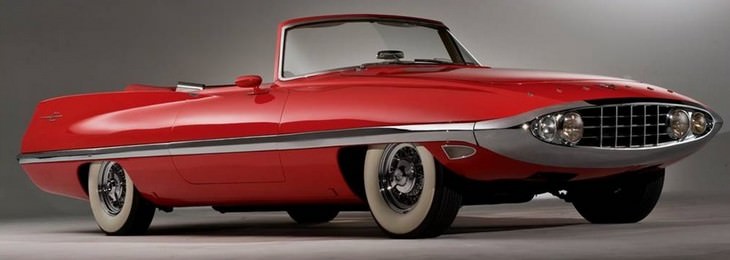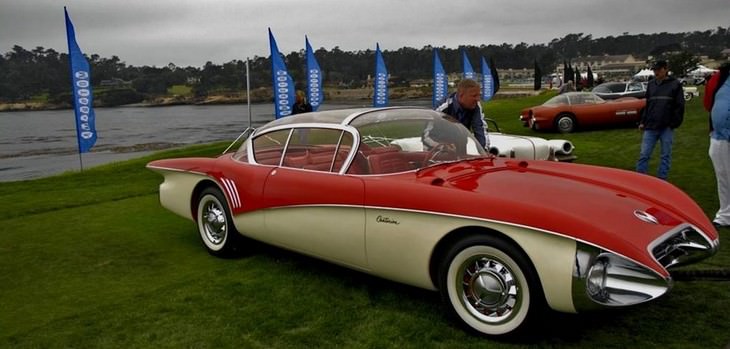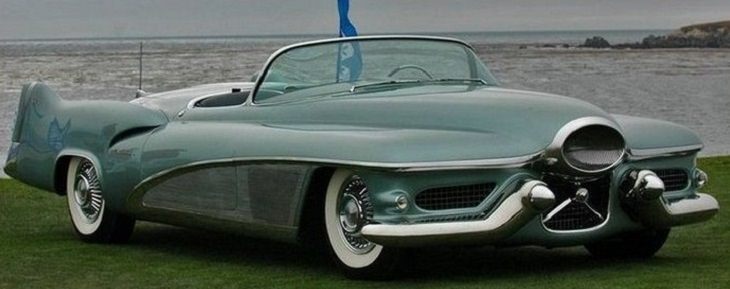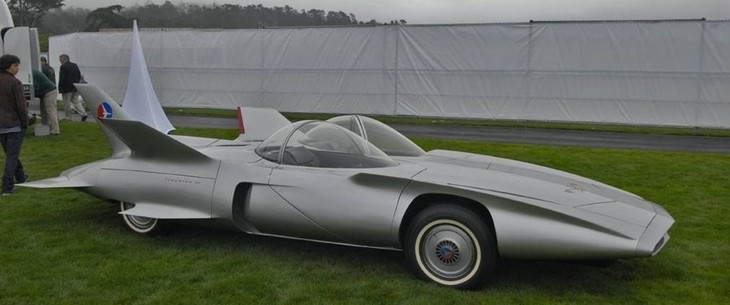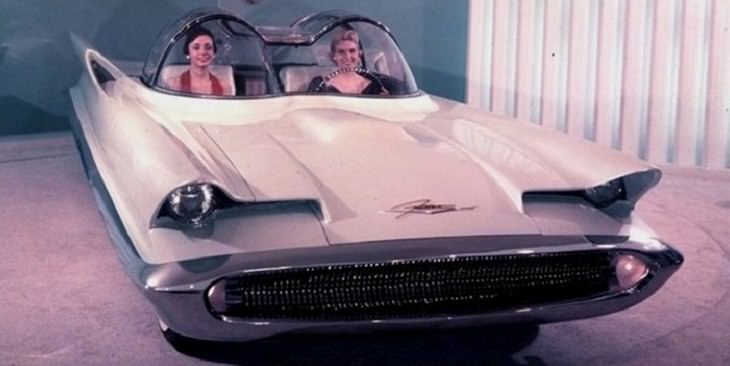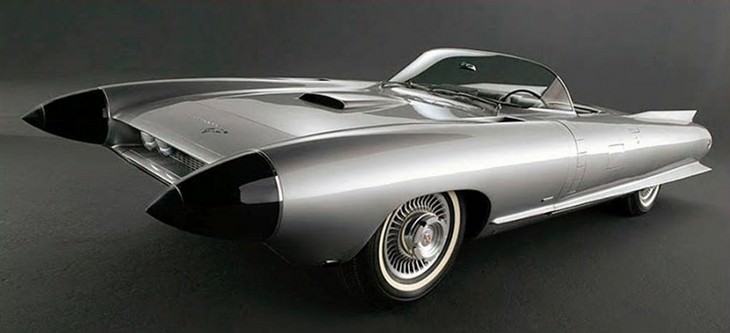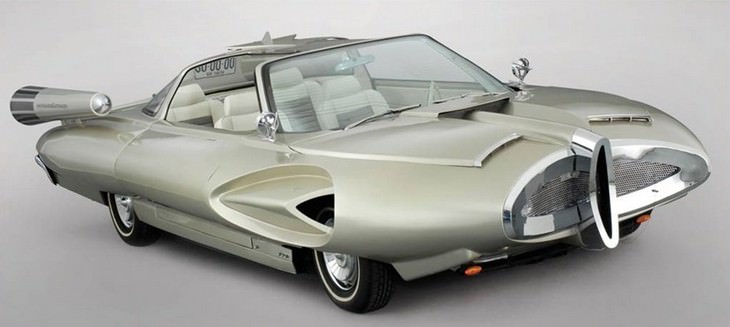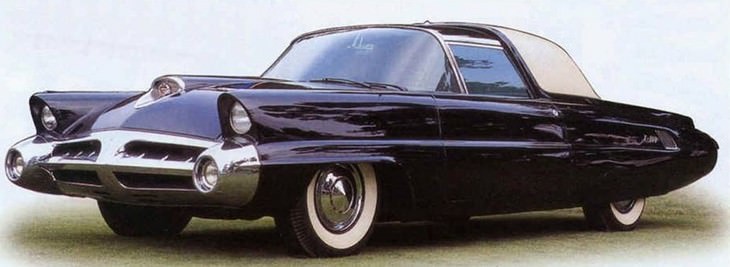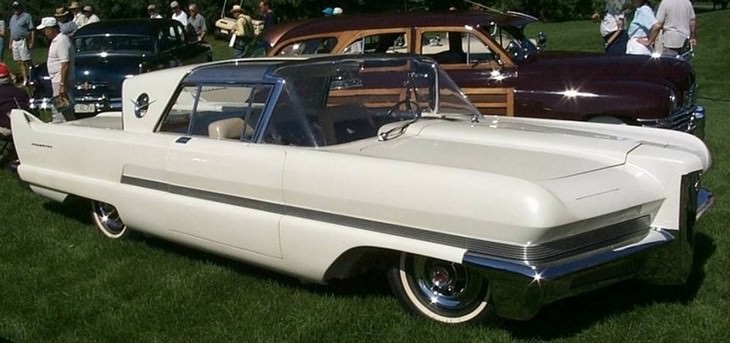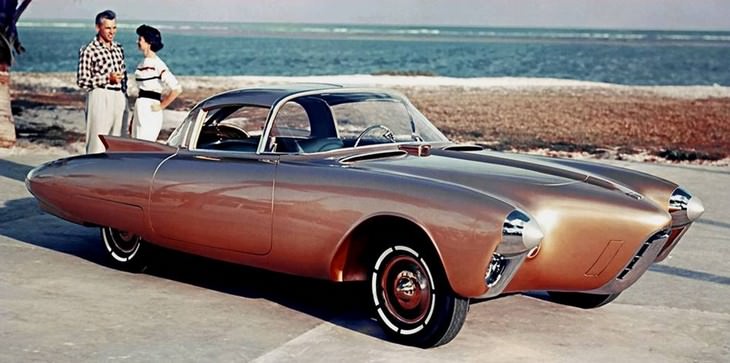1. 1957 Chrysler Diablo
The Diablo was born in a time of space exploration and fascination. It was designed with the feeling of an airplane that was meant for the road. The car was so well-designed, it was tested and shown to have the lowest drag coefficient ever seen on any car up to that time.
2. 1956 Buick Centurion II
The Centurion featured a red and white fiberglass body, airplane like interior design, a full clear "bubble top" roof and the first Backup camera in place of a Rear view mirror, although it was never shown to be functional and was merely a concept.
3. 1954 Ford La Tosca
The La Tosca was actually designed as an educational project, meant to show young engineers how difficult it is to design a car, even for experienced car designers. The project actually took 4 times longer than projected but eventually paved the way for the 1958 Lincoln.
4. 1951 GM Lesabre
The General Motors Le Sabre was a 1951 concept car. Possibly the most important show car of the 1950s, it introduced aircraft-inspired design elements such as the wrap-around windshield and tail fins, which became common on automotive designs during the second half of the decade.
5. 1959 GM Firebird III
This concept car featured titanium skin, seven wings and tail fins, a double bubble canopy, air drag brakes which emerged from flat panels in the body, an automated guidance system to avoid accidents and steering controlled by a joystick.
6. 1955 Lincoln Futura
The Lincoln Futura was a concept car designed by the Lincoln division of Ford Motor Company. It was built by Ghia entirely by hand in Turin, Italy, at a cost of $250,000 (which is nowadays equivalent to $2,200,000) and was displayed on the auto show circuit in 1955. In 1966 the car was modified by George Barris into the Batmobile, for the 1966 TV series Batman.
7. 1955 Ford Mystere
In the 1955 Chicago Extravaganza, Ford displayed their rear-engine concept car - the Mystere. Funnily, the shown model did not have an engine, but did display a host of new technologies that were uncommon in cars at the time, such as a control joystick between the front seats, allowing the car to be driven from either seat, a radiotelephone in the console between the two back seats, a push button ignition switch, and even a television set behind the front seat.
8. 1959 Cadillac Cyclone
Designed by the legendary Harley Earl, the Cyclone was a testbed for futuristic styling and technology. It featured a radar operated crash avoidance system, with the radar sensors mounted in twin "nose-cones" on the front of the car. Of the Cyclone's stylistic features, the bubble top canopy was the most prominent. Silver coated for UV protection, the canopy automatically opened along with the sliding electrically operated doors. The canopy could also be stowed in the rear compartment, where it rested on a special air-bag base.
9. 1958 Ford X-2000
While the X-2000 was not revolutionary in anything other than design, it was still an outstanding example of the 1950's design trends. The car might have been the inspiration for the U.S.S. Enterprise - the spaceship from the Star Trek series. In 1999, a car enthusiast saw a picture of the car in a book and decided to build his own version. That car is now appearing in car shows around the world.
10. 1953 Ford X-100
Ford's first "dream car", served as a precursor to Ford's 60's designs and introduced new concepts in automotive technologies, such as a moisture-sensor that would automatically close the top roof hatch if it started raining.
11. 1956 Packard Predictor
This hardtop coupe's design followed the lines of the planned 1957 cars. It had many unusual features, among them a roof section that opened either by opening a door or activating a switch - well ahead of later T-Tops. The car had seats that rotated out allowing the passenger easy access, a feature later used on some Chrysler products. The Predictor also had the opera windows, or portholes, found on concurrent Thunderbirds.
12. 1956 Oldsmobile Golden Rocket
Designed to resemble its namesake, the Golden Rocket had a fiberglass body, and was one of the first cars to have a tilt-wheel. When either door was opened, the roof panel would automatically raise and the seat would come up 3 inches and swivel outward for easy access.
13. 1956 Pontiac Club De Mer
The Pontiac Club de Mer was a purpose-built, concept car that was unveiled at the General Motors Motorama in 1956 to celebrate GM's commitment to futuristic design. The brainchild of GM engineer-designer was Harley Earl. The "de Mer" was a two door sport Roadster that incorporated innovative breakthrough styling like a sleek, low-profile body encasing a large powerplant.

